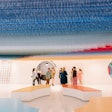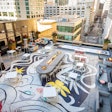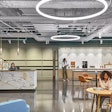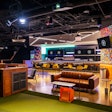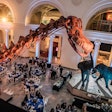
Keeping consumers interested in buying cars is always a priority for Jerry H. Cizek III, president of the Chicago Automobile Trade Association and general manager of the Chicago Auto Show—possibly now more than ever, in this challenging economy. Scheduled for February 12 through 22, this year's Chicago Auto Show will see 1,000 cars spread across 1.3 million square feet of McCormick Place. We recently spoke with Cizek about marketing the event and how the automotive industry's current crisis may affect this year's show.
How did you get Nissan to exhibit at the show, after the company had made plans to pull out?
Nissan and the dealers got together and realized that the purpose of an auto show is to sell cars. And this is a very strong market for Nissan. Their dealers and regional office felt that it was a beneficial thing for them to be in our show. Frankly, we never received any type of an official notification that they were not going to be in the show. We’ve seen what their displays are going to be in 2009, and they’re more active in the displays than they were in previous years. They’ll have local salespeople on the show floor who can talk about actual attributes of the vehicles, instead of product specialists as in previous years [employees who travel from show to show]. But Chicago is a great auto market, and it’s good to have people at the show who can relate to the Chicago customers.
Are there any elements of the show that won't be present this year?
Nothing. Everything that we’ve done in the past will be done again this year. We’re not falling for that trap—you know, let’s go hide in a corner because the sky is falling. We’re having our special days: employee discount day, women’s day, food drive days. These allow people to bring non-perishable goods to the auto show for a discounted ticket, and the donated food goes to the Chicago Christian Industrial League. For the show itself, we only provide the venue, and the manufacturers provide what’s in the displays. For instance, Chrysler is bringing back its test track, which is immensely popular.
How have you cut back on labor costs for this year's show, and have union rules presented obstacles for cutting back?
Chicago labor gets a bad rap. Over the past few years there have been tremendous changes in the work rules with reducing true sizes, and that’s helped everyone. If you reduce the crew size, then it saves the exhibitor money. Our exhibitors have managed to save substantially with this reduced crew size. McCormick Place gets a bad rap on labor, but viability is key to keeping it competitive.
What are some of the ways that exhibitors give show attendees an interactive experience with their vehicles?
The Chrysler test drive involves a huge test track within the Chrysler, Dodge, and Jeep display, which allows people to drive the vehicles on various terrains rather than just sit in them. It’s been a huge success. Chrysler actually engaged in studying the Disney World crowd control plan so they could learn how to keep people engaged while they’re waiting in line. There’s no other show that I know of where dealers do something like this inside.
Many of the dealers have interactive and educational displays, and people can get in the cars. Any time the manufacturers have sports celebrities, it draws huge lines. They’re very successful with the public. And many of the manufacturers have contracts with sports celebs who will appear at the show. They try to build excitement by not releasing the details until closer to the show.
Is there any way to help build consumer confidence in the current market?
In building consumer confidence, the show is the best and most convenient way for people to comparison shop and get an education about new technology with hands-on demonstrations and no sales pressure. We can’t kid ourselves, everyone knows this is a tough time, both in auto and housing, and people need to be reassured. We want to reassure customers that the products that are being represented are meaningful to their lives.
Even if they’re not ready to buy now, they can find out what kinds of things are going to be important when they decide to buy cars in the future. Is it going to be hybrid, diesel, or electric vehicles? We’re not sure which is going to be the next hottest thing, but consumers are going to be voting with their wallets. The reason people want to come might not be because they’re buying this year, but because they want to see how their needs are going to be best serviced by the industry in the future.
Do you take any steps to position the show against competitors in other markets?
We don’t even consider that, and I don’t think any other auto show considers us competition either, because every market is different. People in South Florida won’t be traveling here to Chicago for an auto show, and vice versa.
What are the specific ways that you measure feedback from your exhibitors after the show?
We always do surveys and make personal visits to participating dealers. They’re our customers, and we need to find out what went right and what didn’t and how we can build for the future. We do both online and mail-in surveys, but mostly we rely on the face-to-face visits, which we try to complete before the mid-summer season so we have the feedback as we’re planning for the next year.
How do your exhibitors gauge their ROI for exhibiting in the show?
I think they’re going to be looking at that a lot closer in shows going forward because, especially in this economy, they want to find out if it’s worthwhile to spend the dollars. We intend to partner with a group that will measure traffic as well as exhibitor and consumer interaction so that the dealers can measurably quantify their ROI. We’re the only auto show in the nation to do that. The company we’re using is Michigan-based Ethnometrics. They’re a GES company, one of the three biggest exhibit houses for trade shows in the nation, and they’re also our general contractor for the auto show.













